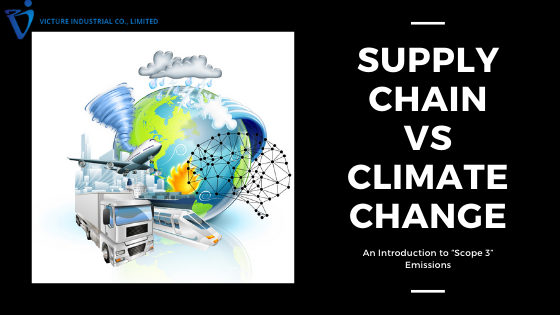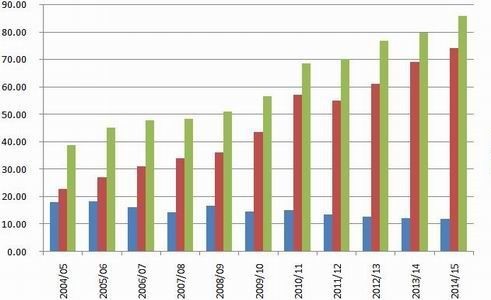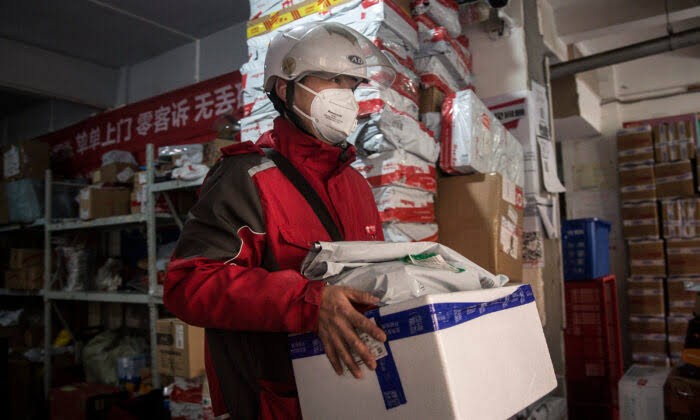
An Introduction to “Scope 3” Emissions
ABSTRACT
You probably have heard that many countries have signed the Paris Climate Agreement, and have pledged to become Carbon Neutral by 2050, but do you know what means? Do you know that leadership and innovation from business are vital elements for meeting the Carbon Neutrality goals of those countries? Do you know that supply chain professionals have a key role to play in reaching Carbon Neutrality goals across the world? To learn more about the important role of supply chain organizations in managing global climate change, click through to the article.
BACKGROUND – Part 1:
A “Greenhouse” is a structure full of windows that let in sunlight. That sunlight creates warmth. The big trick of a Greenhouse is that it doesn’t allow the warmth from the sunlight to escape.
“Greenhouse Gases” are gases in Earth’s atmosphere that trap heat. They let sunlight pass through the atmosphere, but they prevent the heat that the sunlight creates from leaving the atmosphere. The main greenhouse gases are:
Water vapor
Carbon dioxide
Methane
Ozone
Nitrous oxide
Chlorofluorocarbons
Overall, Greenhouse Gases are a good thing. Without them, our planet would be too cold, and life as we know it would not exist. However, there can be too much of a good thing.
Greenhouse Gases from human activities are the most significant driver of observed climate change since the mid-20th century. As Greenhouse Gas emissions from human activities increase, they build up in the atmosphere and warm the climate, leading to many other changes around the world—in the atmosphere, on land, and in the oceans. These changes have both positive and negative effects on people, society, and the environment—including plants and animals. Because many of the major Greenhouse Gases stay in the atmosphere for tens to hundreds of years after being released, their warming effects on the climate persist over a long time and can therefore affect both present and future generations.
The Top 3 emitters globally of Greenhouse Gases are (1) China; (2) the USA; and (3) India.
In December 2015, these countries plus 192 others signed the Paris Climate Agreement.
The goal of the Agreement is to limit Greenhouse Gas emissions to levels that would prevent global temperatures from increasing more than 2 °C (3.6 °F) above the temperature benchmark set before the beginning of the Industrial Revolution. To accomplish the goal, the signatories are seeking to achieve “Carbon Neutrality” by 2050.
Carbon Neutrality is defined as a balance between atmospheric inputs of Greenhouse Gases by emission sources (e.g. electrical power plants and engines that burn fossil fuels for energy) and removal of Greenhouse Gases into natural “sinks” such as forests, oceans, and soil. These natural sinks will eventually be combined with developing technologies to extract and sequester carbon dioxide from power plants.
As of January 2021, 190 countries of the 195 had ratified the Paris Climate Agreement.
China has committed to reaching Carbon Neutrality by 2060.
The USA, the European Union, Great Britain and many other signatories to the Paris Climate Agreement of 2015 have committed to reaching Carbon Neutrality by 2050.
India has not yet committed to a time-frame for reaching Carbon Neutrality.
BACKGROUND – Part 2:
The Greenhouse Gas (“GHG”) Protocol organization provides standards, guidance, tools and training for business and government to measure and manage GHG emissions. Their Corporate Accounting and Reporting Standard (“Corporate Standard”) provides the accounting platform for virtually every corporate GHG reporting program in the world. It provides requirements and guidance for companies and other organizations preparing a corporate-level GHG emissions inventory.
The Corporate Standard splits emissions into three “Scopes”:
“Scope 1” covers the GHG emissions from operations under a facility’s direct control, including onsite fuel combustion.
“Scope 2” covers the GHG emissions by a facility from usage of electricity, steam, heat and/or cooling purchased from third parties.
“Scope 3” covers “Upstream” and “Downstream” value chain GHG emissions – i.e. GHG emissions that the organization is responsible for within its value chain.
Because Scope 3 GHG emissions are so wide-ranging in what they encompass, and vary so significantly for different types of organization, they are the most complex part of any organization’s emissions.
For most businesses, Scope 3 GHG emissions also make up the lion’s share of their total emissions.
Many organizations report that 80% of their GHG emissions fall under the auspices of Scope 3 and, for some, Scope 3 accounts for as much as 97% of their overall GHG emissions.
For Scope 3 GHG emissions, the GHG Protocol Standard defines 15 categories that an organization may choose to manage, in any combination, based on the specific impacts to its business. Of the 15 categories, there are 8 Upstream categories:
Purchased Goods And Services
Capital Goods
Fuel and Energy-related Activities (not included in scope 1 or scope 2)
Upstream Transportation And Distribution
Waste Generated In Operations
Business Travel
Employee Commuting
Upstream Leased Assets
For Sourcing and Supplier Management professionals, focus should be on the Scope 3 Upstream categories as those are controlled / influenced from within the inbound supply chain entities for the organizations that employ these professionals.
GHG Protocol has also published the “Corporate Value Chain (Scope 3) Accounting and Reporting Standard” that complements and builds upon the Corporate Standard to promote additional completeness and consistency in the way companies account for and report on indirect GHG emissions from value chain activities. This new standard is meant to be used in conjunction with the Corporate Standard.
SUPPLY CHAIN IMPLICATIONS
Although governments have taken the spotlight with regard to reduction of Greenhouse Gases and achievement of Carbon Neutrality to significantly diminish global warming and its associated effects, existing government policies and actions on their own will not be sufficient meet the goals that have been set. Leadership and innovation from business are vital for meeting the goals.
Per the World Economic Forum Insight Report, “Supply-chain decarbonization will be a “game changer” for the impact of corporate climate action. Addressing Scope 3 GHG emissions is fundamental for companies to realize credible climate change commitments. It enables companies in customer-facing sectors to use their influence in supply chains to speed and support rapid decarbonization throughout the economy, and it can put pressure on suppliers in regions where governments do not (yet) do so. As 90% of the world’s businesses are small and medium enterprises (SMEs), working with supply chains and connecting them with the appropriate tools is a vital part of the implementation of ambitious corporate climate action.”
Unfortunately, there is no “one size fits all” approach to reducing Scope 3 GHG emissions, and it is going to take a lot of hard work to achieve success. The approach that each company should take for reducing Scope 3 GHG emissions will depend on the type, size, and location of the organization as well as the Upstream categories it chooses to focus on. For each category that the company chooses to focus on, it should develop a category-specific reduction roadmap to drive its actions.
As recommended in the World Economic Forum Insight Report, the approaches companies take should be based upon utilization of different combinations of the following “abatement levers” which are shown in ascending order of average cost to implement:
Circularity/recycling => Less virgin material production and utilization
Material and process efficiency => Less material usage and energy consumption
Renewable power => Power from renewable sources (e.g. solar, wind)
Renewable heat => Heat from renewable sources (e.g. biomass, power)
New processes => New production processes (e.g. H2-DRI for steel)
Nature-based solutions => Avoiding deforestation, more sustainable agriculture
Fuel switch => Transport: switch to green fuels, batteries, hydrogen
Carbon capture => Capture carbon and recycle or store it underground
The impact of each abatement lever varies strongly across different types of supply chains, so it will be important to understand which ones are most appropriate for you to utilize in your efforts.
By addressing GHG emissions, companies can identify opportunities to bolster their bottom line, reduce risk, and discover competitive advantages. As impacts from climate change become more frequent and prominent, governments are expected to set new policies and provide additional market-based incentives to drive significant reductions in emissions. These new policy and market drivers will direct economic growth on a low-carbon trajectory. Businesses need to start planning for this transition now as they make decisions that will lock in their investments for years to come.
Although the work will be hard, there are several areas where benefits will be accrued by those are able to reduce the Scope 3 GHG emissions of their companies sooner rather than later:
Environmental
Reputational
Attracting & Retaining Talented Employees
Financial
Compliance
Leading companies are already addressing the challenges of reducing Scope 3 GHG emissions. It is time for others to start doing so, too.
Join the Circular Economy LinkedIn group at https://www.linkedin.com/groups/13908783/

October 13, 2023
Ultimate Guide for Canton Fair TourLow and High Production

July 08, 2021
Low and High ProductionLow and High Production

June 30, 2021
CAD, BOM, DFM & IPLow and High Production

June 17, 2021
Order Volume ConsiderationsLow and High Production

June 09, 2021
Product Requirement DocumentLow and High Production














